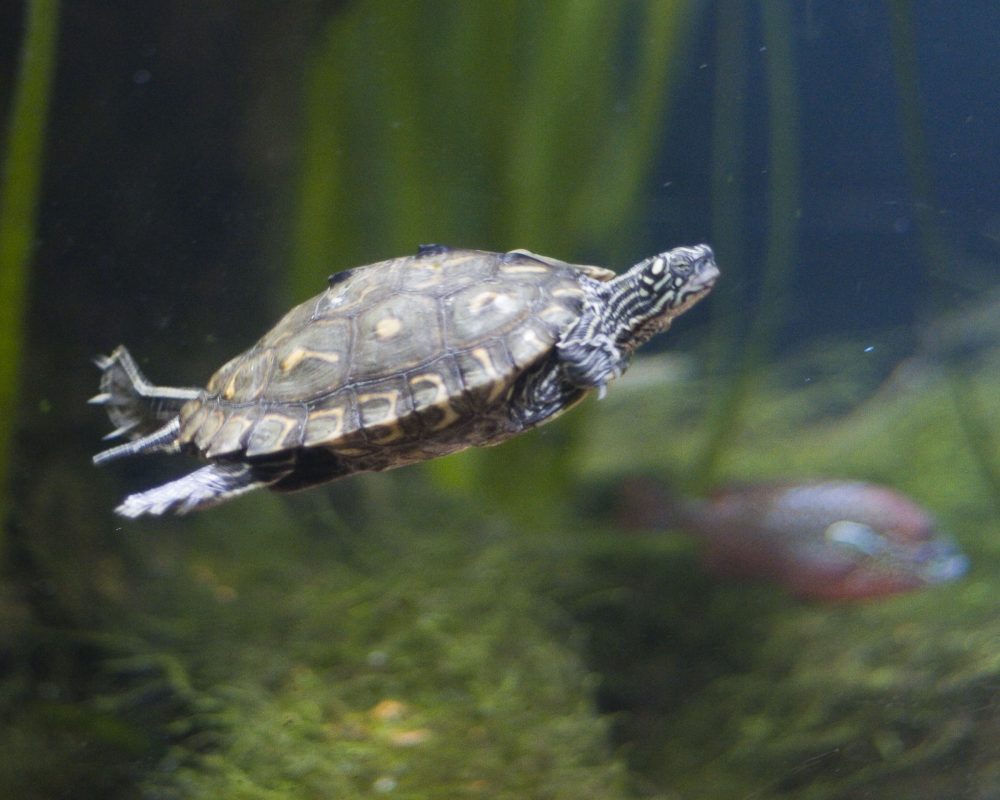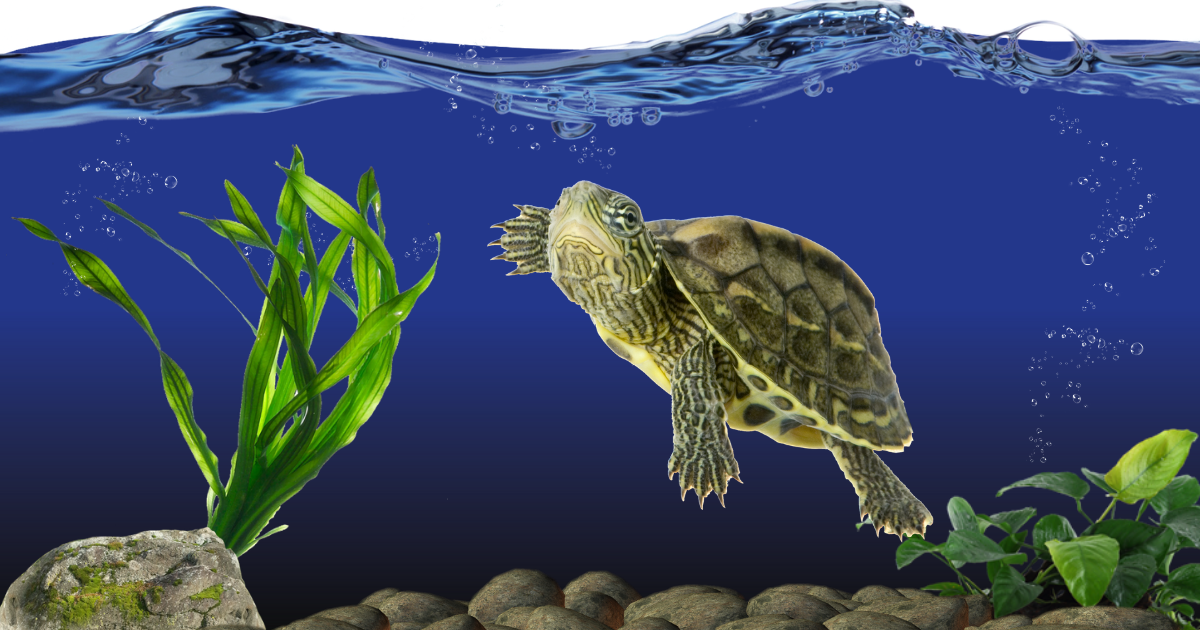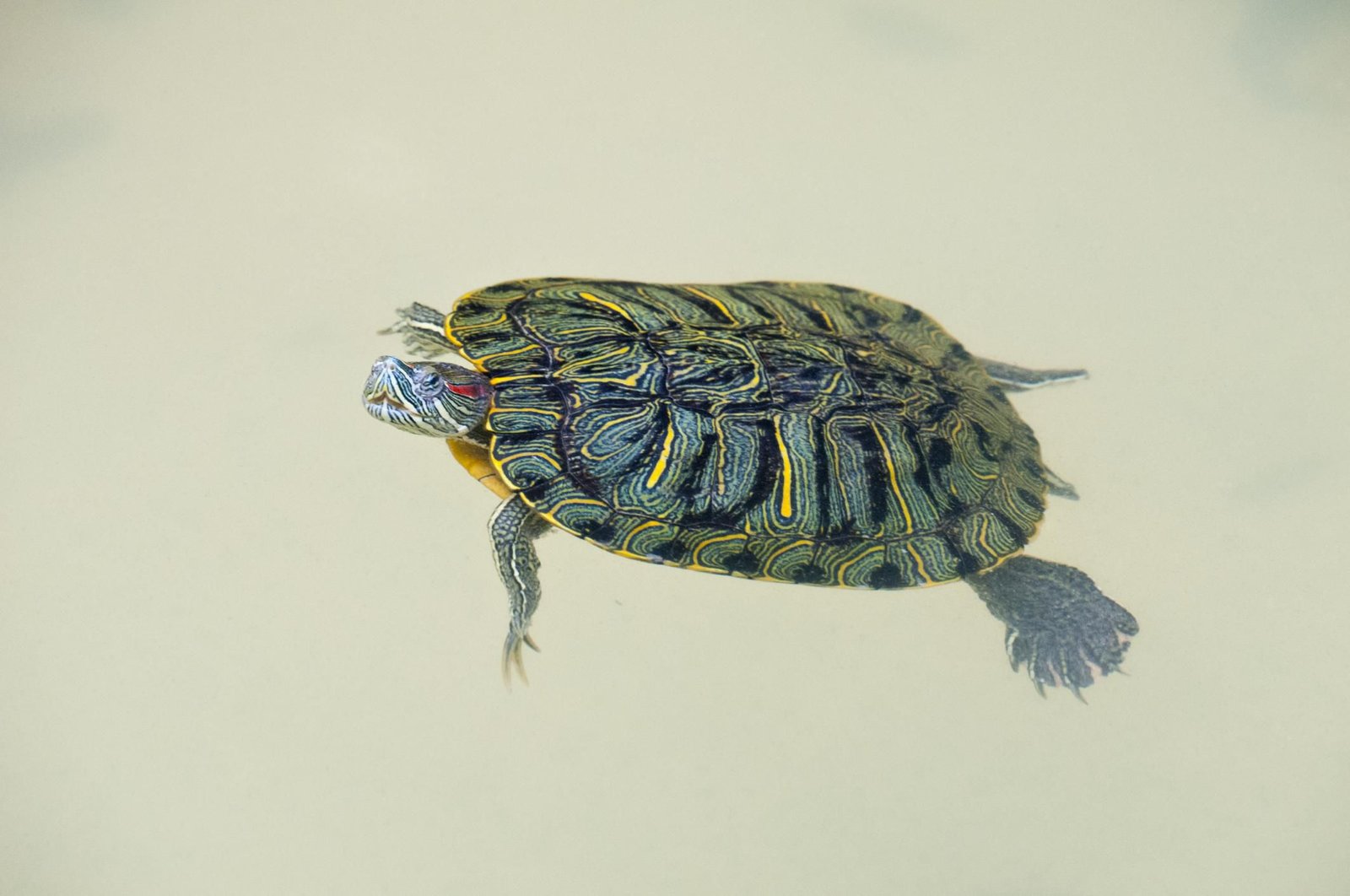Aquatic turtles are great alternatives to cats and dogs as pets, but it’s important to learn how to care for them before getting one, as they require space, light, moisture, and proper food for survival. They are relatively easy to care for and don’t require a lot of special attention, but they do need the right lighting, temperature, water filtration system, and regular enclosure cleaning.
It’s recommended to provide them with access to both water and a dry area at all times and let them bask for a few hours each day, taking into consideration factors such as the turtle’s age, size, and overall health.

Credit: www.hikariusa.com
Introduction To Pet Aquatic Turtles
Pet Aquatic Turtles make fascinating and unique pets, but they require proper care to thrive. Learn all about keeping these turtles in terms of habitat, lighting, temperature, filtration, and feeding to ensure their well-being. Proper understanding and attention to their needs will ensure happy and healthy pet turtles.
Are you considering adding a pet to your family? If you’re looking for a unique and fascinating companion, pet aquatic turtles might be the perfect choice for you. These aquatic creatures are not only visually appealing with their vibrant shells, but they also offer a variety of benefits as pets. Before diving into the world of pet aquatic turtles, there are a few important factors to consider. Let’s explore the benefits of keeping these remarkable creatures and the things you should consider before bringing one home.
Benefits Of Keeping Pet Aquatic Turtles
Keeping pet aquatic turtles comes with several advantages that make them a popular choice among pet lovers:
- Low maintenance: Unlike traditional pets like cats and dogs, aquatic turtles require relatively low maintenance. They don’t require daily walks or constant attention, making them suitable for busy individuals or families.
- Educational value: Pet aquatic turtles can be a great way to educate both children and adults about the fascinating world of reptiles. By observing and caring for these turtles, individuals can learn about their natural habitats, behaviors, and unique characteristics.
- Stress relief: Interaction with pets has been proven to reduce stress and anxiety levels. The gentle and calming nature of aquatic turtles can provide a sense of relaxation and tranquility.
- Aesthetically pleasing: With their colorful shells and graceful movements, pet aquatic turtles can add a touch of beauty to any living space, whether it’s a small apartment or a larger home.
- Longevity: Pet aquatic turtles have the potential to live for several decades with proper care and habitat. This means you can enjoy their company for many years, forming a long-lasting bond.
Things To Consider Before Getting A Pet Aquatic Turtle
Before bringing a pet aquatic turtle into your home, there are a few essential factors to consider:
- Space requirements: Pet aquatic turtles require a spacious environment with both water and land areas. You’ll need to provide a suitable tank or pond that allows them to swim, dive, and bask to maintain their physical and mental well-being.
- Proper lighting and temperature: Turtles rely on specific lighting and temperature conditions for their overall health. Investing in the right lighting fixtures and maintaining the optimal temperature range in their habitat is essential.
- Water filtration: Keeping the water clean and well-filtered is crucial for the well-being of your pet turtle. You’ll need to invest in a reliable filtration system to ensure the water quality remains optimal.
- Proper nutrition: Aquatic turtles have specific dietary needs that should be met to support their growth and overall health. A balanced diet consisting of commercial turtle food, as well as occasional treats like insects and leafy greens, is necessary.
- Time commitment: While aquatic turtles require less attention than some other pets, they still require regular care and maintenance. Feeding, cleaning, and monitoring their habitat are tasks that should be consistently managed.
By considering these important factors, you can ensure that you are ready to provide a suitable and nurturing environment for your pet aquatic turtle. Now that you have a better understanding of the benefits and considerations associated with pet aquatic turtles, you can make an informed decision about whether they are the right pets for you.

Credit: www.kingbritish.co.uk
Housing And Habitat
Discover the essential guidelines for keeping pet aquatic turtles. Learn how to create the perfect housing and habitat, including lighting, temperature, and filtration systems, to ensure the health and well-being of your beloved turtles.
Choosing The Right Tank
When it comes to housing your pet aquatic turtle, choosing the right tank is crucial. A tank that is too small will restrict your turtle’s movement and hinder its overall health and well-being. As a general rule of thumb, the tank should be at least 10 gallons per inch of the turtle’s shell length. For example, if your turtle’s shell length is 4 inches, the tank should be a minimum of 40 gallons.
Setting Up The Tank
Once you have chosen the appropriate tank size, it’s time to set it up for your turtle. Start by creating a suitable substrate using river rocks or sand, ensuring it covers the entire bottom of the tank. Next, fill the tank with dechlorinated water, making sure the water level is deep enough for your turtle to fully submerge and swim comfortably.
Providing Proper Lighting And Heating
Proper lighting and heating are essential for creating a healthy habitat for your aquatic turtle. In addition to natural sunlight, you will need to provide artificial UVB lighting to simulate the sun’s rays. This helps your turtle metabolize calcium and maintain strong bones and shell. Additionally, a basking area with a heat lamp should be provided to maintain the right temperature for your turtle’s overall health and digestion.
Creating A Basking Area
A basking area is essential for your aquatic turtle’s well-being. Your turtle needs a spot to come out of the water and dry off completely, replicating its natural habitat. You can achieve this by installing a platform or using aquarium-safe materials to create a designated area. Ensure that the basking area is large enough for your turtle to comfortably climb onto and bask under the heat lamp.
Maintaining Water Quality And Filtration
Water quality and filtration play a vital role in your aquatic turtle’s health. Turtles produce waste, and without proper filtration, the water can quickly become dirty and hazardous to their well-being. Invest in a high-quality water filter system designed specifically for turtle tanks. Regularly test the water parameters such as pH, ammonia, and nitrate levels, and perform partial water changes as needed to maintain optimal water quality.
By following these guidelines for housing and habitat, you can provide your pet aquatic turtle with a comfortable and healthy environment to thrive in. Remember, creating the right tank, setting up proper lighting and heating, providing a basking area, and maintaining water quality are all essential factors in ensuring the well-being of your aquatic turtle.
Care And Feeding
Discover the secrets to keeping pet aquatic turtles happy and healthy with our comprehensive guide. Learn everything you need to know about turtle housing, co-habitation, handling, basking, diet, feeding, cleaning, and more. Take great care of your aquatic turtles today!
Feeding Aquatic Turtles
Feeding your pet aquatic turtle a proper diet is crucial for its overall health and well-being. These reptiles require a balanced diet that includes a variety of foods to ensure they receive all the necessary nutrients. It’s important to note that different species of aquatic turtles may have specific dietary needs, so it’s essential to research the particular needs of your turtle. Here are some important points to keep in mind when feeding your aquatic turtle.Providing A Balanced Diet
Diverse Food Choices:
Aquatic turtles are omnivores, meaning they eat both plant material and animal matter. They require a mix of protein, vegetables, and fruits to meet their nutritional needs. Some of the common foods for aquatic turtles include shrimp, earthworms, mealworms, snails, fish, leafy greens, kale, and insects. It’s crucial to offer a varied diet to ensure your turtle gets all the essential nutrients it needs to thrive.Supplements:
In addition to a diverse diet, it may be necessary to provide supplements to ensure your aquatic turtle receives all the necessary vitamins and minerals. Calcium and vitamin D3 supplements are especially important for maintaining strong and healthy shell development. Consult with a reptile veterinarian to determine the correct dosage and frequency of supplements for your specific turtle.Handling And Socializing With Turtles
Gentle Handling:
When handling your aquatic turtle, it’s important to be gentle and avoid any rough movements. Turtles can easily become stressed or frightened, so approach them calmly and avoid sudden movements. Support their bodies fully while holding them, as they can be quite delicate. Regular handling can help your turtle become familiar with you and reduce stress during routine care activities.Safe Socialization:
While turtles may not be the most interactive pets, they can still enjoy socialization to some extent. Providing a clean and safe environment where your turtle can explore and interact with its surroundings is crucial. You can also consider adding tank mates, such as compatible fish or other small aquatic animals, to provide some companionship for your turtle. However, always research and ensure that the tank mates won’t pose any risk to your turtle’s health.Cleaning And Maintaining The Tank
Regular Water Changes:
Maintaining a clean and healthy tank is essential for the well-being of your aquatic turtle. Regular water changes are crucial to prevent the buildup of toxins, ammonia, and bacteria. As a general rule, partial water changes of 25-50% should be done weekly, while a full tank clean should be performed monthly. Use a water dechlorinator to remove chlorine and other harmful chemicals from tap water before adding it to the tank.Frequent Filter Maintenance:
A high-quality filtration system is vital to keep the water clean and ensure the removal of waste and toxins. Regularly clean and replace filter media according to the manufacturer’s instructions to maintain its effectiveness. Additionally, monitor the water temperature and ensure it stays within the appropriate range for your turtle’s species.Monitoring Health And Recognizing Common Issues
Regular Health Checks:
Observing your aquatic turtle’s behavior and physical appearance regularly is essential for early detection of any health issues. Look out for signs of shell damage, abnormal growths, changes in appetite, lethargy, or any other concerning symptoms. Monitor their weight and keep track of any fluctuations.Recognizing Common Health Issues:
While some health issues may require veterinary attention, being aware of common problems can help you identify and address them promptly. Respiratory infections, shell rot, vitamin deficiencies, and parasites are among the common health issues in aquatic turtles. Research the specific symptoms and treatment options for each ailment to ensure you can provide appropriate care if needed. Taking proper care of your pet aquatic turtle requires attention to feeding, handling, cleaning, and monitoring their health. By providing a balanced diet, gentle handling, maintaining a clean tank, and being vigilant about their health, you can ensure that your aquatic turtle lives a happy and healthy life.:strip_icc()/Pet_Aquatic_Turtles_1237254_v2-5bb2624f4cedfd00269131a1.png)
Credit: www.thesprucepets.com
Frequently Asked Questions Of All About Keeping Pet Aquatic Turtles
Are Aquatic Turtles Good Pets?
Aquatic turtles make great pets and are a unique alternative to cats and dogs. However, they require proper care. It is important to learn about their space, lighting, moisture, and food needs before getting one. Aquatic turtles are sensitive animals, so providing the right environment is crucial for their survival.
Are Aquatic Turtles Hard To Take Care Of?
Aquatic turtles are relatively easy to care for and don’t require much special attention. You’ll need the right lighting, temperature, and water filtration system for their habitat. They need space to walk and their enclosure should be cleaned frequently.
How Do You Keep Aquatic Turtles?
To keep aquatic turtles, you need to provide them with access to both water and a dry area at all times. They should have the right lighting, temperature, and water filtration system. Turtles also need space to walk around and their enclosure should be cleaned regularly.
Basking is important, so let them spend a few hours outside the water each day. Take proper care of their diet and provide a balanced combination of shrimp, earthworms, mealworms, and snails. Aquatic turtles make great pets, but it’s crucial to learn how to care for them before getting one.
Are Pet Turtles Supposed To Be In Water All The Time?
Pet turtles should have access to both water and a dry area at all times. It is recommended to let them bask for a few hours each day, but the duration can vary based on their age, size, and health.
Conclusion
Keeping pet aquatic turtles can be a rewarding experience. These fascinating creatures require proper care in terms of space, light, moisture, and nutrition. If you’re considering having an aquatic turtle as a pet, it’s essential to learn about their specific habitat needs and provide them with the right environment.
While they may not require excessive attention, it’s important to clean their space regularly and ensure they have the necessary equipment for their well-being. With proper care, aquatic turtles can make great pets.

